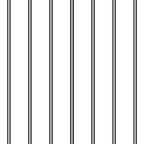The Inaccuracies Of History Textbooks (part 2 of 2)
Continued from part 1 — link here.
4. Cheng Ho and the introduction of Islam into Malaysia
The era was the 16th century and Malaysia and portions of Indonesia and Thailand were part of the mighty Malacca Empire centred in modern day Malacca. The Majapahit empire before that as well as surrounding kingdoms were either Hindu (in Java and Bali) or Buddhist (in Khmer or Cambodia). In our textbooks it is stated that the Malacca Empire was originally Hindu with its first emperor Parameswara ruling over what is Malaysia and Indonesia today. The books also assert that Arab traders who travel to Southeast Asia in search of valuable spices such as nutmeg, cinnamon etc. also brought Islam to the region. They were credited for spreading the religion and turning the Malacca Empire into the first Islamic Empire in Southeast Asia. However very few records show that the traders were proselytizing. They were mainly in the region to trade. Also upon close scrutiny nothing explains the speed of how Islam became the official religion. Here is an alternate narrative:
We know that Admiral Cheng Ho visited the region more than a few times during that era. He was instrumental in establishing diplomacy and trade ties between the Ming dynasty and the empires in the region. This culminated in the marriage of a Ming princess Hang Li Poh to the Malaccan emperor. As an aside, the soldiers, ladies-in-waiting and servants who came with the princess are ancestors of the Strait Chinese who are renowned for their art and cuisine.
Cheng Ho was a Muslim in the court of the Ming Emperor. Most of the archaeological documents were unfortunately lost during the final days of the Ming dynasty. What little we have showed Cheng Ho’s remarkable feats. His ships and fleets dwarfed even those from naval powers such as Portugal. His travels took him as far as the Horn of Africa and Zanzibar in today’s Tanzania. His military might and his gifts made an impression everywhere from Macau to Mozambique.
The Malaccan emperor visited China with Cheng Ho prior to his wedding with the Princess. He would have seen the dynasty at its pinnacle with untold riches. The alternate narrative was that Cheng Ho converted the Emperor and he in turn decreed that all his subjects would henceforth be Muslims. This would have explained the speed of the conversion. In business parlance it is called the “top down” approach as opposed to the “bottom up” method taught in our history books.
One can perhaps refer to how Christianity spread in Europe. Paul and his followers converted the emperor Constantine and the Roman Empire became Christian as did the bedrock of European civilization. The same happened during the Schism and the split of the Roman Empire. I would suggest this is the case as well for Malacca.
Naturally it is politically convenient to attribute the introduction of Islam to the Arabs. Malay nationalists would find it unpalatable to admit that a Chinese was responsible for bringing the national religion to Malaysia. It is unfortunate that little records exist for Cheng Ho. Nevertheless what little we know about him is nothing short of astounding. He should have been enshrined in the annals of history alongside great explorers such as Columbus and Marco Polo. We hope one day with the discovery of new historical finds we can do that.
